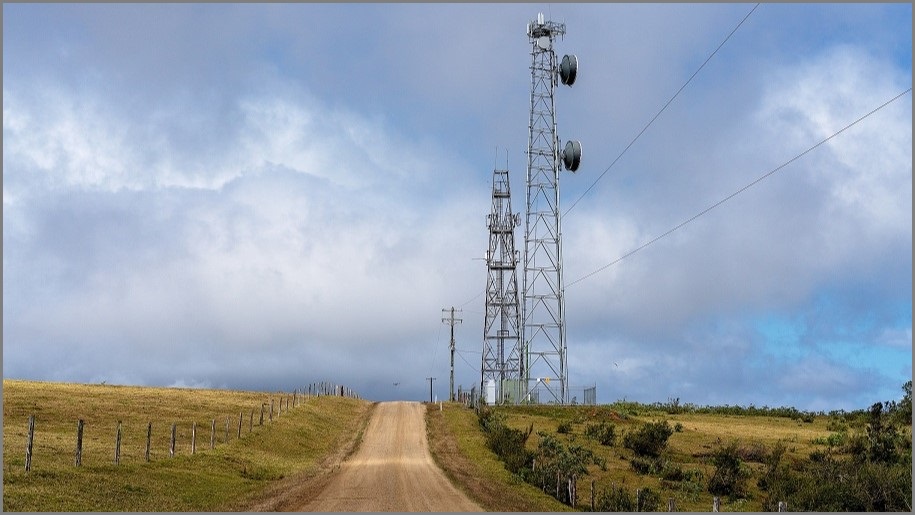Obsolete mobile tower access arrangements are hindering the availability, quality, and resilience of regional mobile communications, a review has found, as the government explores ways to maintain communications during the coming extreme bushfire season.
The Regional Mobile Infrastructure Inquiry’s final report, which was completed by the ACCC in June and published on 23 October, was commissioned early in 2022 to explore some of the blockers that were preventing mobile carriers from building more extensive, reliable mobile infrastructure in regional and rural areas of Australia.
Loss of mobile base stations during extreme fire events poses major logistical problems – not only for residents but for emergency crews, government authorities and logistics operators – and current roaming arrangements exacerbate the problem, the report noted.
For example, if an Optus mobile tower was damaged by bushfires, its subscribers wouldn’t be able to connect to a nearby Telstra tower even if it were still operational – potentially isolating mobile users and risking loss of life in bushfires that are expected to be the worst in years.
A major recommendation of the report – which includes 20 findings drawn from the ACCC’s assessment of the market – is that mobile carriers introduce an emergency roaming capability that would allow mobiles to make emergency calls on any available network, even if they are not subscribers to that network.
Such a capability is technically feasible, the ACCC found, and the Department of Infrastructure, Transport, Regional Development, Communications and the Arts (DITRDCA) has been paired with the National Emergency Management Agency (NEMA) to work with industry to make it happen.
The surge in “increasingly complex disasters” has made better communications crucial, Minister for Emergency Management Murray Watt said in announcing the new initiative.
“Disasters can occur and change quickly, making connectivity vital for all Australians,” he continued. “That’s why enhancing emergency roaming mobile capability has the potential to save many lives.”
Market corrections needed
Roaming issues are just one of the problems identified in the report, which found that years of industry consolidation had not only left consumers dealing with “patchy coverage” – and remote First Nations communities worse off still – but had disincentivised telecommunications carriers from extending their networks in regional areas.
Despite efforts to ensure diversity of mobile networks by the ACCC – which blocked a proposed Vodafone-TPG Telecom merger in 2019 and last year did the same after a Telstra-TPG Telecom plan that it concluded would leave regional Australians “worse off” – the report found that inconsistent and stubbornly high leasing costs were disincentivising mobile carriers from adding new towers or leasing space on existing towers.
Those towers are built both on private and Crown land, with one submission to the review revealing that the NSW National Parks and Wildlife Service charges carriers $18,000 per year for sites on remote Crown land and $32,000 per year for sites in regional areas; ‘co-users’ – carriers who install mobile equipment on towers belonging to other providers – pay $9000 and $16,000 annually, respectively.
These costs had remained high despite a 2019 recommendation by the NSW Independent Pricing and Regulatory Tribunal (IPART) Review of Rental Arrangements for Communications Towers on Crown Land – which recommended these costs be slashed to anywhere from $508 in remote areas to $16,900 in metropolitan areas – that state governments have ignored for years.
The mobile towers of Telstra, Optus and TPG Telecom had each been sold to third-party tower operators promising to reduce costs thanks to economies of scale – however, in preparing the latest report the ACCC found that commercial exclusivity had, as ACCC commissioner Anna Brakey said, “created a strong bilateral contractual relationship between the old owner and the new owner.”
Commercial tower owners are not subject to the same Facilities Access Code (FAC) as telecommunications operators – leaving the current FAC “no longer fit for purpose,” the ACCC said in noting that tower companies aren’t obligated to lease tower space to co-users.
“It is not yet clear,” the ACCC said, “whether the sale of their towers will make it easier for mobile network operators to provide greater mobile coverage in the future.”
The three mobile operators “still drive communications investment decisions in regional, rural and remote Australia,” Brakey said.
“The tower companies only build new towers when they have commitments from the network operators to use them…. [but] mobile network operators have little incentive to invest in greater or improved mobile coverage in regional areas if doing so would not increase their market shares in the national mobile market or is otherwise profitable.”










